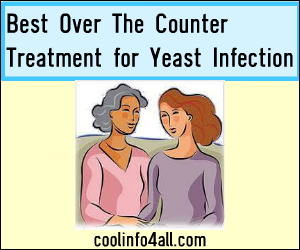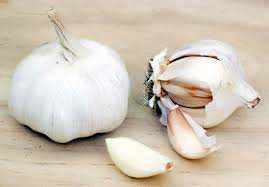What Is The Best Over The Counter Treatment for Yeast Infection
What is Yeast Infection
 A yeast infection, also known as candidiasis is the name for a common infection caused by a yeast called candida albicans (a type of fungus). Candida is always present in and on the body in small amounts. However, when an imbalance occurs, such as when the normal acidity of the vagina changes or when hormonal balance changes, Candida can multiply. There are different forms of yeast infection, depending upon the area affected. Most commonly, the mouth, vagina, and damper skin areas are affected, as the yeast likes to grow in moist areas. This is why vaginal and oral yeast infections are particularly prevalent.
A yeast infection, also known as candidiasis is the name for a common infection caused by a yeast called candida albicans (a type of fungus). Candida is always present in and on the body in small amounts. However, when an imbalance occurs, such as when the normal acidity of the vagina changes or when hormonal balance changes, Candida can multiply. There are different forms of yeast infection, depending upon the area affected. Most commonly, the mouth, vagina, and damper skin areas are affected, as the yeast likes to grow in moist areas. This is why vaginal and oral yeast infections are particularly prevalent.
Yeast infection is a very common fungal condition that 75% of women will suffer from at least once in their lifetime. Two of the most common areas for these infections are the vagina and the mouth. Yeast infection in the mouth is commonly known as thrush. Thrush affects all people including children. It is also cause by yeast which when it multiplies in the mouth, it leaves a trail of infection that is very painful. Continue to read what is the best over the counter treatment for yeast infection.
Causes of Yeast Infection
Yeast are always present in the vagina in small numbers, and symptoms only appear with overgrowth. Candida can multiply when an imbalance occurs. Many things can raise your risk of a vaginal yeast infection. Main causes of yeast infection are as follows:
- Poor immune system
- Stress
- Lack of sleep
- Illness
- Poor eating habits, including eating extreme amounts of sugary foods
- Pregnancy
- Having your period
- Taking certain medicines, including birth control pills, antibiotics, and steroids
- Diseases such as poorly controlled diabetes and HIV/AIDS
- Hormonal changes during your periods
Yeast Infection Symptoms
Yeast infection symptoms in women and men are diverse and can appear in many different parts of their body. For example, yeast infection symptoms in women may include redness in and around the vagina / vulva besides severe itching, burning, irritation, and an unusual white / white-grey discharge rather like cottage cheese. Women may also experience pain whilst urinating and pain whilst having intercourse.
Men can have similar symptoms on the penis; itching, irritation, and burning sensation, with red spots / patches over the head or foreskin. They can sometimes have the discharge too — although this is not very common — and, of course, pain whilst having intercourse. Symptoms of Thrush includes mouth lining, tongue, and/or angles of the mouth are red, cracked, or have white patches.
Yeast Infection in Women
Seventy-five percent of women are likely to have at least one yeast infection during their lifetime; nearly half have two or more. Vaginal yeast infections are the second most common cause of abnormal vaginal discharge in the United States. Yeast infections are quite common during pregnancy. It seems that the higher levels of estrogen in pregnancy cause the vagina to produce more glycogen (sugar), which feeds the yeast. Yeast infections are also more common in women with diabetes.
Vaginal yeast infections can clear up without treatment. However, if you don’t treat a yeast infection, there is a very small chance you may develop a serious infection. There are several causes of yeast infection in women, including:
- Weakened or compromised immune systems
- Pregnancy
- Diabetes
- Long-term use of broad-spectrum antibiotics
- Use of corticosteroid medicines
- Wearing tight, poorly ventilated clothing and underwear also can contribute to yeast infections.
Can Men Get Yeast Infections?
Though yeast infections are more common in women, anyone can get one. It’s possible for a man to get a genital yeast infection if he has unprotected sexual intercourse with a partner who has a genital yeast infection. So the answer of question, can men or guys get yeast infections, is yes. Prolonged antibiotic use increases your risk of a yeast infection, and men and women with diabetes or impaired immune systems, such as those with HIV, are more susceptible to yeast infections. Male yeast infection symptoms include a reddish rash, itching or burning at the tip of the penis. Most male yeast infections symptoms are easily treated with over-the-counter antifungal treatments.
How To Prevent Yeast Infections
Following strategies are useful on how to prevent yeast infections:
- Keep the external genital area clean and dry.
- Avoid irritating soaps and vaginal sprays to prevent yeast infections.
- Avoid scented soaps, powders or toilet tissue.
- Avoid daily use of panty liners, which can trap moisture and prevent good airflow.
- Change tampons and sanitary napkins frequently.
- Wear loose cotton underwear that doesn’t trap moisture.
- After swimming, change immediately into dry clothing instead of staying in your wet bathing suit.
- If you have diabetes, try to maintain stable blood sugar levels to avoid yeast infections.
- Take antibiotics only when prescribed by your health care professional and never for longer than directed.
Natural and Home Remedies for Yeast Infection
There are a variety of natural treatments and home remedies available to get rid of yeast infection, however, before attempting any of these home remedies for yeast infections, you should see a doctor to be evaluated and properly diagnosed. Avoid home remedies for yeast infection while you are pregnant unless first approved by your obstetrician. There are over-the-counter and prescription remedies available to get rid of yeast infection, but many women prefer to use home remedies to treat the condition. If a home remedies for yeast infections did not get rid of yeast infection within a few days, see your health care provider for proper advice.
Some home remedies for yeast infection are as under:
Proper Diet and Nutrition
Proper diet and nutrition are essential for controlling yeast. Because candida thrives on simple sugars and other carbohydrates, it is important to avoid sugary foods, at least temporarily, to prevent the bacteria from proliferating. The basic yeast-free diet is composed mainly of fresh vegetables, nuts and seeds, and unprocessed meats. Avoid all sugars, including candy, soda, coffee, tea, fruit, milk, bread, cereal, rice, potatoes and pasta.
Probiotics
Probiotics may help you tackle a yeast infection by helping balance the yeast-to-bacteria ratio in your body. An army of healthy bacteria can help get a yeast overgrowth back in check. Food manufacturers add probiotics to juice, yogurt, cheese and even energy bars.
Yogurt for Yeast Infection
Yogurt is a safe way to treat yeast infections as yogurt contains live cultures and acidophilus, which promotes the growth of good bacteria that is helpful in treating yeast infections. The yogurt for yeast infection can either be consumed orally or applied directly to the vaginal area. If applying to the vagina, sufferers should use unflavored yogurt and freeze it into a tampon applicator. The tampon applicator containing yogurt for yeast infection can then be inserted into the vagina. This should be performed one to two times a day while symptoms still exist. A pad should be worn to capture any discharge.
Garlic
 If you have a severe yeast infection, take a clove of garlic, cut it in half and place it inside of your vagina at night. This procedure should be repeated for “a few nights. A cut clove of garlic gives a stronger dose of yeast killing garlic juice but it also may burn the skin of the vagina.
If you have a severe yeast infection, take a clove of garlic, cut it in half and place it inside of your vagina at night. This procedure should be repeated for “a few nights. A cut clove of garlic gives a stronger dose of yeast killing garlic juice but it also may burn the skin of the vagina.
Tea Tree Oil
Tea tree oil is another effective home remedy for yeast infections. Never take tea tree oil internally or use it undiluted. Mix several drops into warm water and use it as a sitz bath for itch relief.
Apple Cider Vinegar
Apple cider vinegar makes it hard for yeast to grow. According to Natural-Homeremedies-For-Life.com, you can make an apple cider vinegar bath by drawing a hot bath and adding two cups of apple cider vinegar and 1/2 cup of salt. Soak in the bath for 20 minutes, being sure to dry completely when finished. To make a wash, dilute apple cider vinegar in water and add a crushed clove of garlic. Let mixture stand for a several minutes. Use mixture to cleanse affected area or soak a tampon in it and insert it into the vagina.
What Is The Best Over The Counter Treatment for Yeast Infection
You can definitely get rid of a yeast infection through proper treatment. The most common way to treat a yeast infection is through the use of anti fungal drugs. These can either be prescribed by your doctor or obtained over-the-counter in the form of creams, suppositories, tablets, and ointments at the pharmacy. There are many over the counter treatments and some time it becomes difficult to suggest what is the best over the counter treatment for yeast infection. There is always a debate whether to self-medicate using over-the-counter medications or to use medications prescribed by your doctor. If you believe you have a yeast infection and it is your very first one, then you must attend your physician for a professional diagnosis. This is very important because the symptoms of yeast infection can also be typical signs of other ailments. It is important to note that if you are pregnant or breastfeeding, then you must never self-medicate with over-the-counters, but rather, see your physician for proper treatment. Yeast infection can be treated through natural and home remedies because it is safe and effective method.